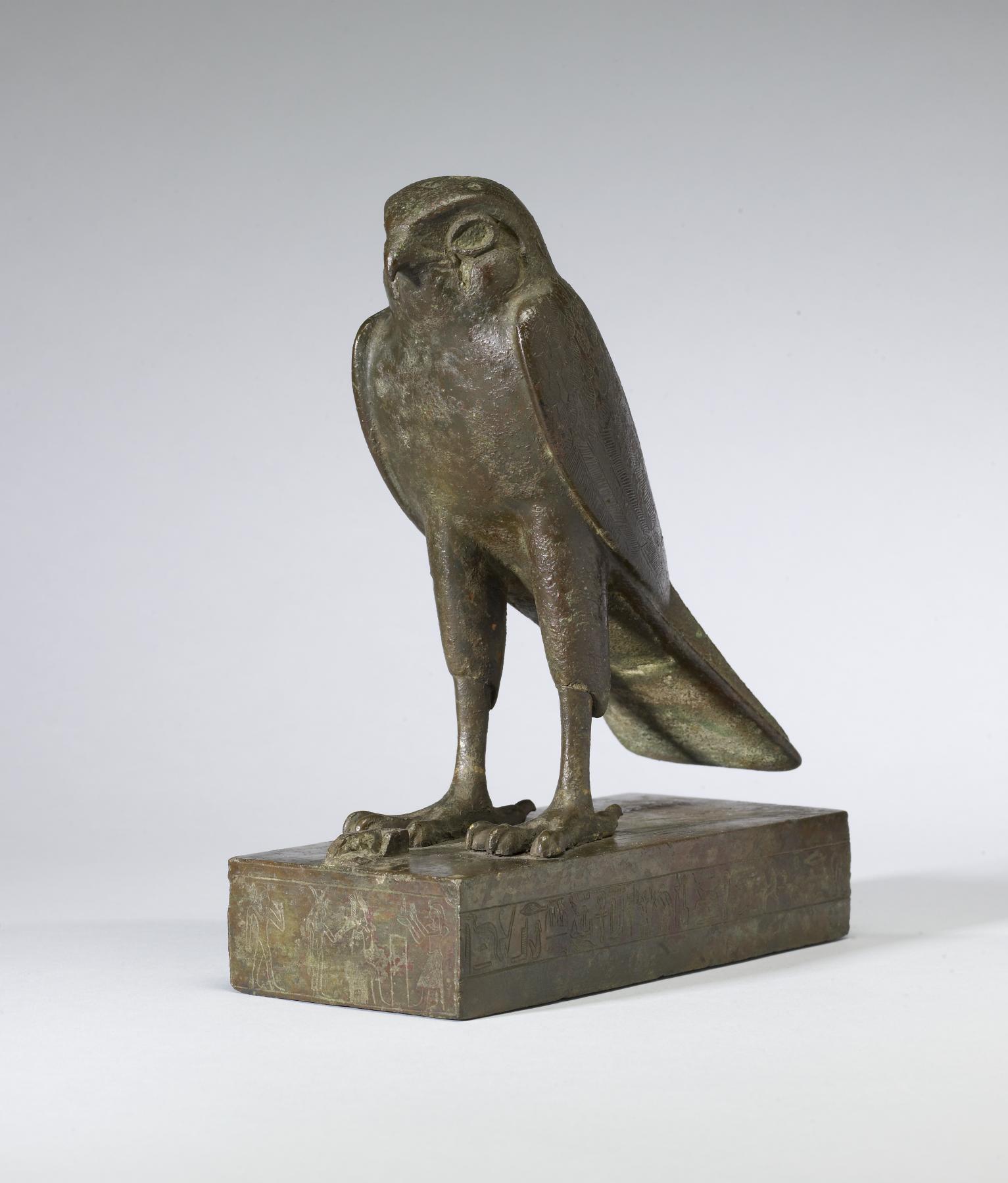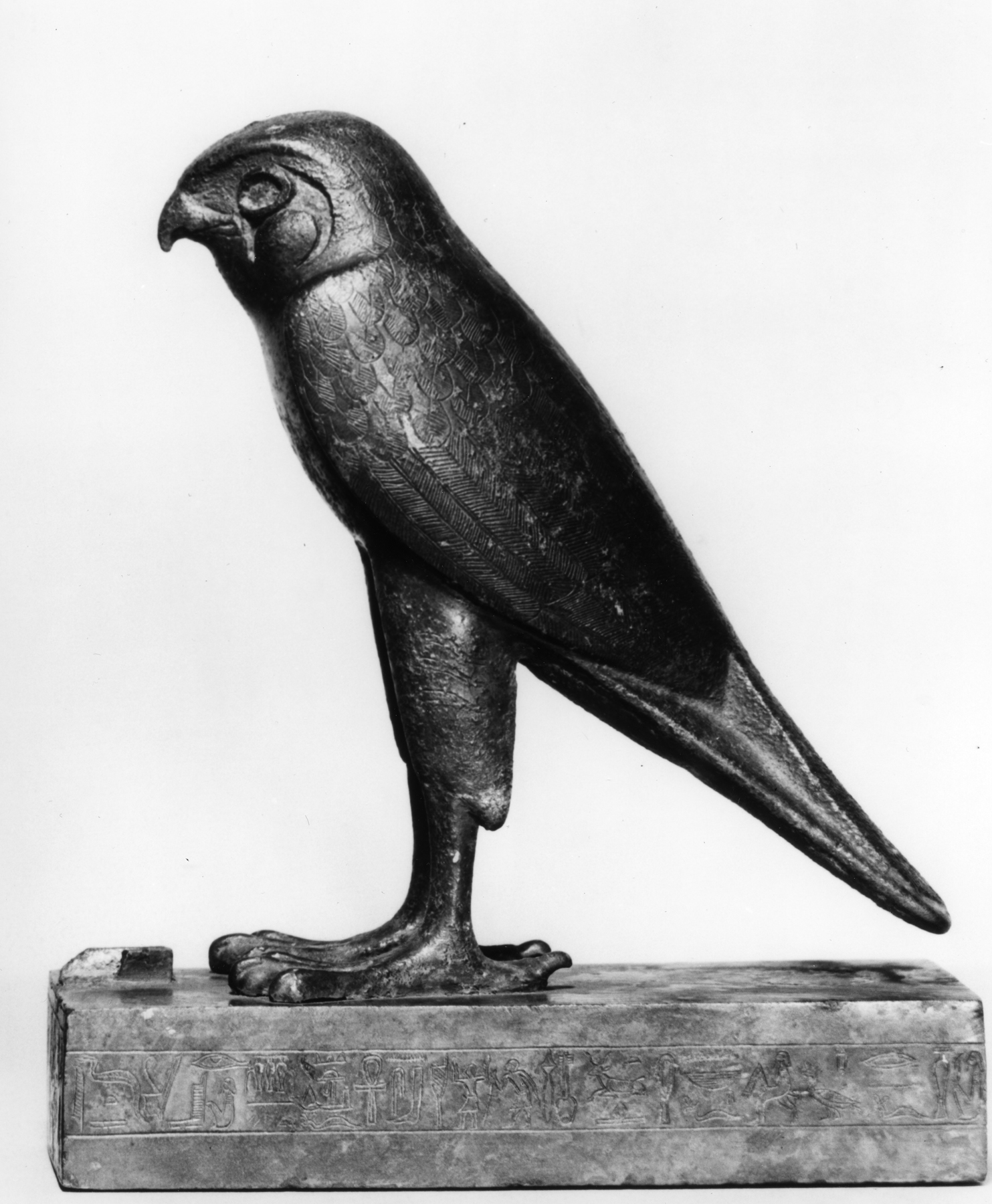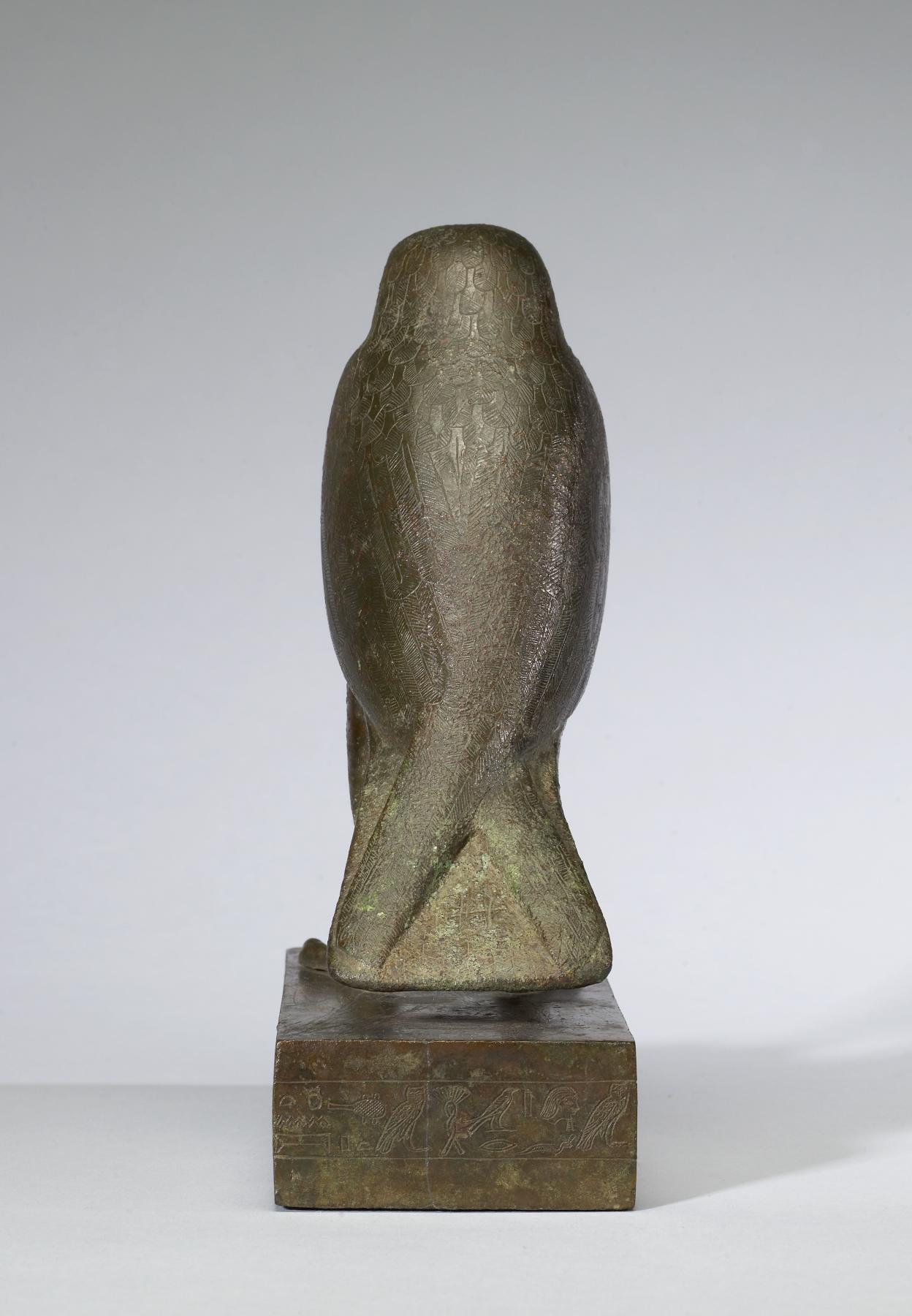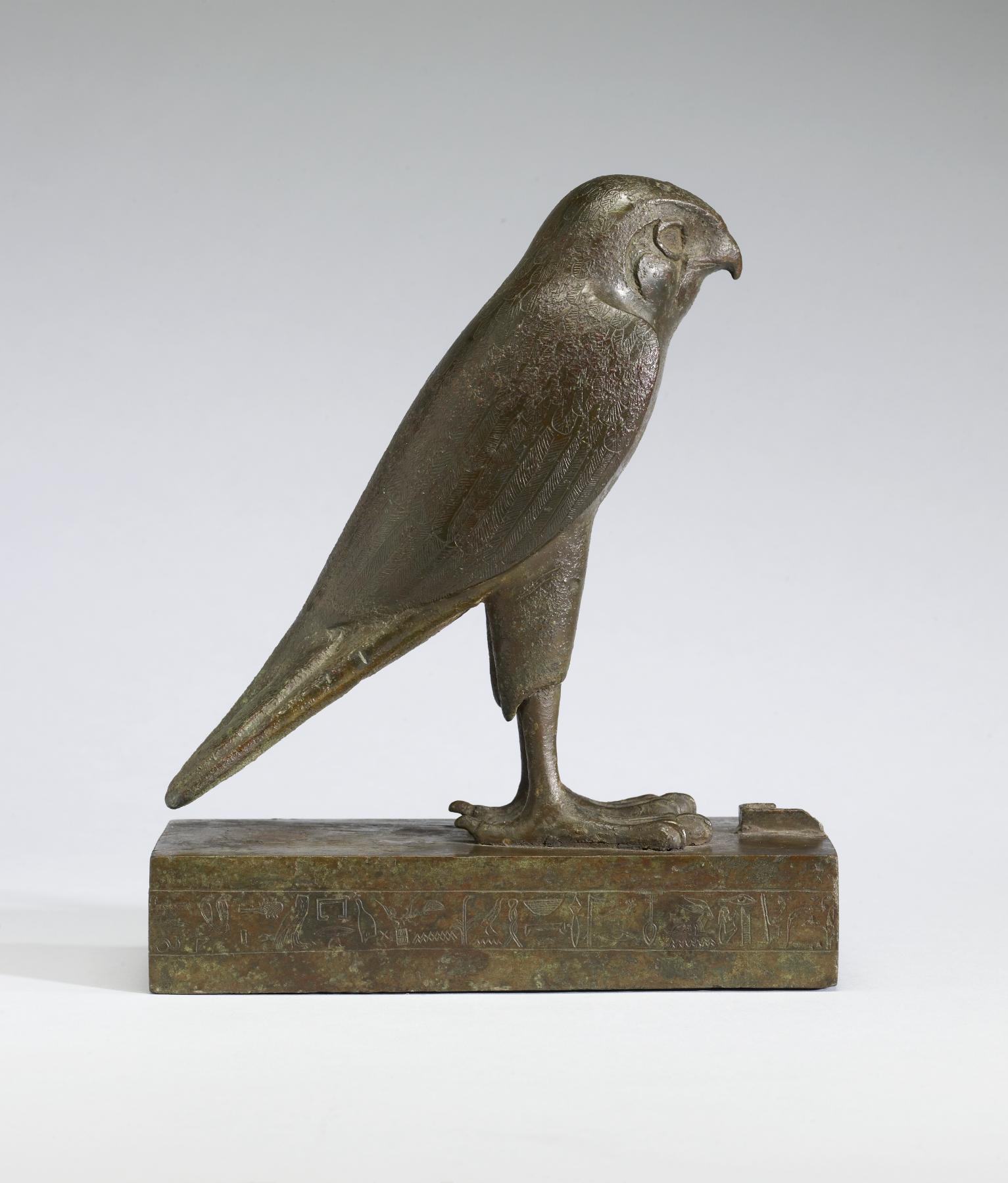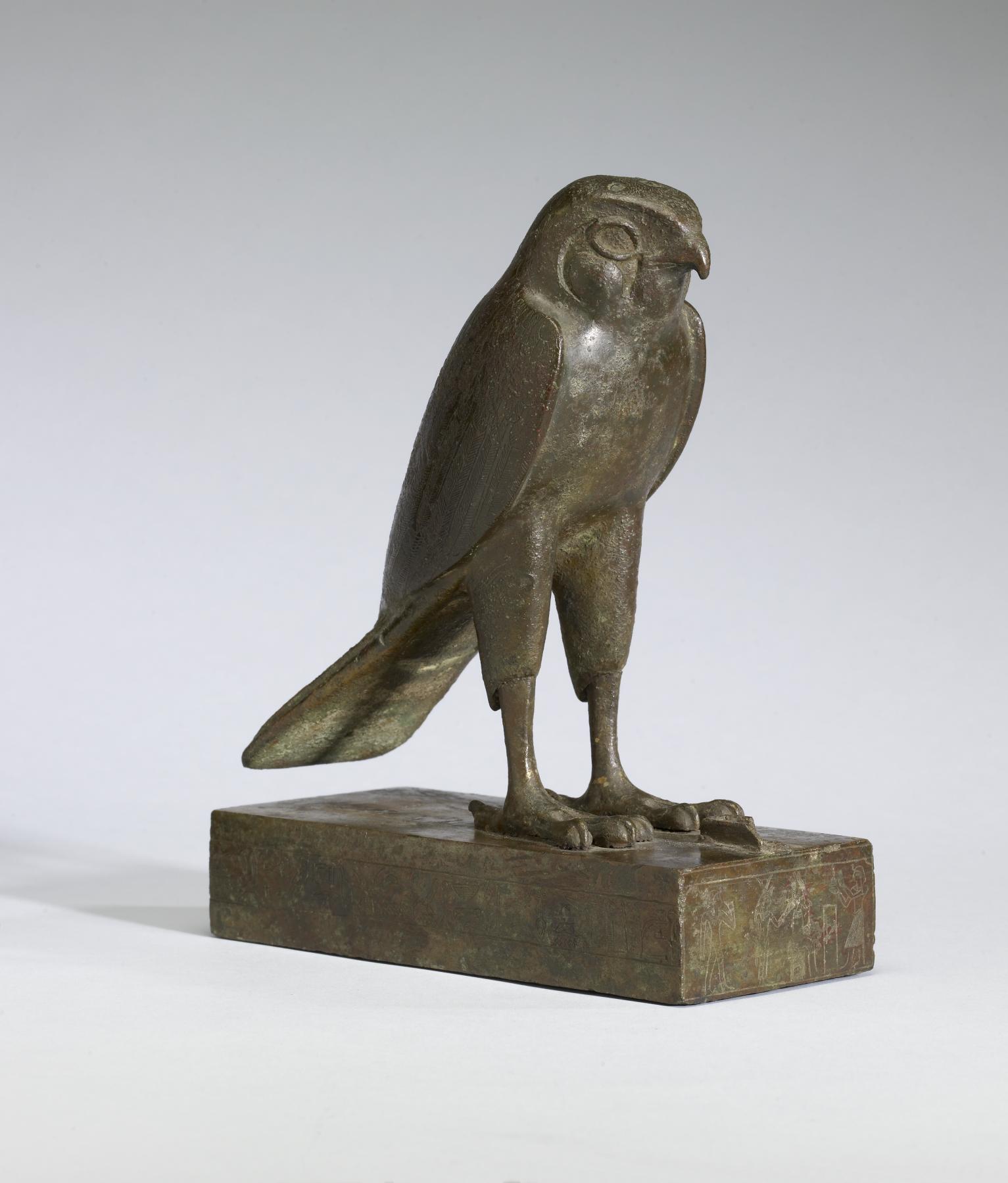Falcon Reliquary
(Ancient Egypt and Nubia )
This statuette, likely dedicated to the falcon-god Horus, is missing its crown and eye inlays. The structure of the feathers is carefully incised. The base is inscribed with texts of adoration and prayer. Examination through the hole in the head revealed bird bones that had been wrapped in linen and placed inside through a trap door between the statuette's legs. A neutron-induced radiograph also reveals the presence of bones inside the reliquary.
Inscription
Provenance
Provenance (from the French provenir, 'to come from/forth') is the chronology of the ownership, custody, or location of a historical object. Learn more about provenance at the Walters.
Henry Walters, Baltimore [date and mode of acquisition unknown]; Walters Art Museum, 1931, by bequest.
Exhibitions
| 1996 | To Arrest the Ravages of Time: Caring for Art at the Walters. The Walters Art Gallery, Baltimore. |
Conservation
| Date | Description | Narrative |
|---|---|---|
| 4/30/1957 | Treatment | cleaned |
| 9/17/1959 | Treatment | cleaned |
| 6/24/1981 | Examination | examined for condition |
| 6/16/1992 | Examination | examined for condition |
| 6/26/2001 | Treatment | cleaned; other |
Geographies
Egypt (Place of Origin)
Measurements
H: 8 15/16 in. (22.7 cm)
Credit Line
Acquired by Henry Walters, by 1931
Location in Museum
Accession Number
In libraries, galleries, museums, and archives, an accession number is a unique identifier assigned to each object in the collection.
In libraries, galleries, museums, and archives, an accession number is a unique identifier assigned to each object in the collection.
54.547

